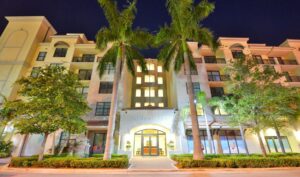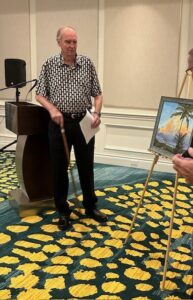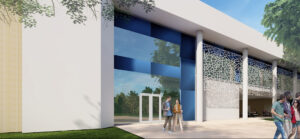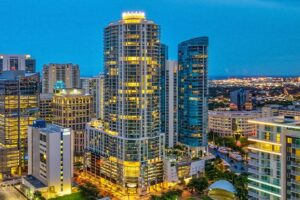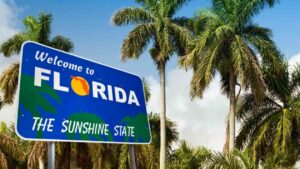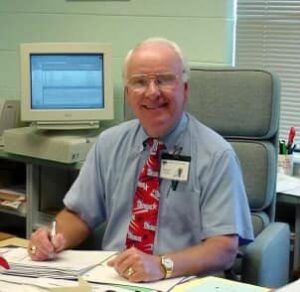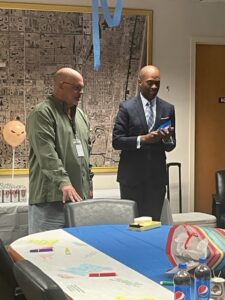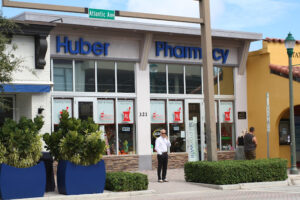
The iconic Huber Pharmacy.
Fortune Magazine ran a piece recently that has stuck with me.
The article talked about the death of the American pharmacy. A bit overblown perhaps, but intriguing nonetheless.
As the son of a retail pharmacist, I read the piece through a personal lens. I saw up close how important the neighborhood pharmacy is to the community. Losing that staple in the neighborhood is yet another example of a thread pulled with unexpected consequences.
The neighborhood pharmacy has been on the ropes for decades now—competition from chains, big box stores, online pharmacies and supermarkets squeezed the independents making them as rare as bismuth crystals. (Look it up, fascinating).
Sure, there are a few independents left—we have a few in Delray and Boca—but they are rare sightings in a world where Walgreens and CVS seem to fill every corner. While writing this blog, I learned of the permanent closing of the iconic Huber Pharmacy, a staple on Atlantic Avenue for decades.
But now the chain stores are having a meltdown as well.
Big chains are shutting down hundreds of locations creating a phenomenon known as “pharmacy deserts” which sadly seems to impact vulnerable populations the most. According to Fortune, in 2023 there were 4,550 fewer pharmacies than a decade ago. And the National Community Pharmacists Association said in February that several thousand more local pharmacies, up to a third of its members, could close this year.
We are not quite at that point in the Delray /Boca area, but I think it’s fair to anticipate that based on trends, we may see a few of our chain stores close.
My dad, long retired, but with a lot of experience in the field, has always wondered how so many stores could survive so close to one another. How could they be adequately staffed? Wouldn’t they begin to cannibalize each another?
I counted 9 CVS stores in Delray and 29 in Boca Raton. (I may be off a little, this was a cursory internet search), Walgreen’s has a similar footprint. That’s a whole lot.
In addition, pharmacists are under stress these days. There’s a term for this kind of burn out; it’s called “pharmageddon.”
Citing overwork and added responsibilities (vaccinations, flu shots etc.) pharmacists are fleeing the industry at an alarming rate.
All of this adds up to a lot an worrisome situation. Pharmacies and pharmacists are important front line health care assets, a critical part of our local infrastructure as we learned during the pandemic.
Competition, burn-out, recruiting issues, general challenges in the retail sector and relentless squeezing of profits by insurance middlemen are conspiring to pinch even the large chains.
And if the large chains are challenged to survive, how are the small pharmacies supposed to make it?
I find all of it sad.
Truth be told, I won’t be broken-hearted if we have a few less chain stores although I would feel bad for the employees. But it’s the loss of the independent drug store that stings.
In typing that sentence, I realize I am part of the problem. I do shop occasionally at an independent, but it has been years since I’ve filled a prescription at a store that resembles my dad’s old Maple Pharmacy, which is still going strong in Smithtown, N.Y.
It’s not that I enjoy CVS or Walgreen’s, I find CVS’ lack of cashiers mystifying since I see people walk out of the store in frustration after being unable to scan items. What makes the chains alluring is the convenience—they are everywhere, even if that might be changing.
But I remember when we valued a relationship with our local retailer. I remember how my father and his partner knew every customer and how those customers trusted their advice and recommendations.
I did get to know my pharmacist at CVS until he disappeared one day. I hear that he’s back, but truth be told, I started using the drive through where I barely see anyone so I wouldn’t know.
Those micro relationships are important touch points. I used to know my teller at Truist, until they replaced her with a voice through a small microphone. She used to give my dogs treats, until one day she was gone. It made it easier for me to switch banks–I no longer had a relationship at Truist.
The neighborhood grocer was another fixture of a time long past. I think Trader Joe’s comes closest because their staff is friendly and helpful, a throwback to a more personal time.
Lately, I’ve noticed what seems to me to be an inordinate number of restaurants going out of business in our town. High rents, high costs of goods, difficulty finding employees, and tons of competition in a hard business leads to the loss of many staples. I will miss Cabana El Rey, I really enjoyed Zima and Christina’s is a major loss—it was a sweet place to meet friends for breakfast and lunch.
The common touchpoint was that all those places were independent and as a result we got to know the wait staff, the managers, the owners, and the bar tenders over the years. For example, I love the food at Papas Tapas, but I also enjoy waving to Papa who is always there with a smile.
Those kinds of interactions give a place soul.
And friends, we need a large dose of soul in our lives.
I find myself thinking a lot about what makes a place special. It always comes down to the unique threads that stir something inside of us. I find myself thinking about an author I admire who taught me that lesson.
Ray Oldenberg was an urban sociologist and a wonderful writer. He coined the term “third place” which referred to places where people spend time between home (first place) and work (second place). They are the places where we meet people, share ideas, have a good time and build relationships. When we lose those places—the barber shop, the diner, the coffee shop and yes, the pharmacy we lose a little of ourselves as well.
I’m working on a play about a third place. I have no idea how to write a play, but I am trying to capture what a third place can mean to a community. The joy is in the writing, the joy is in the connections we make. And the joy is finding those places where we can nurture our humanity in a world gone cold.
News and Notes
I was thrilled to see Esther Isaacs Williams win the Leadership Florida Distinguished Member Award a few weeks ago.
Esther is a wonderful community servant who has been involved for decades in Boca and Delray.
Here’s what Leadership Florida had to say about our friend.
“Ethel Isaacs Williams’ 30-year history of visionary leadership is positively changing communities on local, state, and international levels. She puts into action the principles that are the cornerstone of Leadership Florida. She currently serves as the elected president of The Links, Incorporated, an international not-for-profit corporation and one of the nation’s oldest and largest volunteer service organizations. It has over 17,000 members in over 300 local chapters. In Florida, there are 20 local chapters. The Links members provide over one million hours of documented community service annually. In the over 79-year history of the organization, Ethel is only the third Floridian to serve as an international president. Under her leadership, The Links have expanded national initiatives to include STEMReady, national mentoring for students, and expanded financial literacy programming.”
Congratulations and well done!
Have a safe and happy 4th. Happy birthday America.
